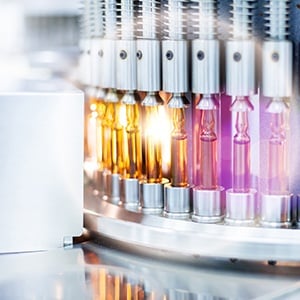
As an employee of the pharmaceutical industry, you are probably all-too-aware of how difficult it is for a product to see success, no matter how innovative it is.
That's why it's critical to have access to equipment that makes production techniques easier, in terms of time, cost, and product effectiveness. One example of such equipment is the high pressure homogenizer, which has numerous functions in the research setting.
In this edition of the BEEI blog, we have compiled a list of important uses for homogenizers, specific to the pharmaceutical industry.
1. Particle Size Reduction
Smaller particle size has been shown to confer enhanced function and increased bioavailability of pharmaceutical drugs. Frequently used products such as nutraceuticals, antibiotics, tablets, and vaccines require particle size reduction in their preparation; enhancing their biological function can therefore be easily accomplished in this step.
Homogenization is the most popular method for particle size reduction due to its ability to achieve both small particle size and uniform consistency. These qualities can be hugely beneficial to pharmaceutical products, as they can increase bioavailability and chemical stability, make tablet ingestion easier, and enhance physical appearance.
2. Scaling for Drug Development
The pharmaceutical industry is a booming business because of the researchers who continue to discover innovative cures, treatments, and preventative regimens. The drug development process is not easy, however, and most products developed in the R&D stage never see the daylight of manufacturing.
However, for those products that do make it to clinical trials and further, their success largely depends on the scalability of their technique. While many mixing methods exist, homogenization is impressively scalable, which can increase cost savings, lower time requirements, and decrease the product’s likelihood of failure.
3. Synthesis of Essential Drug Components
Molecules such as emulsions and dispersions are key to the development of many commonly used pharmaceutical products, and both can be easily produced through homogenization. Emulsions are mixtures of two immiscible liquids, and comprise oral and topical products. They work to mask unpleasant chemical taste, increase absorption rate, optimize viscosity, and enhance washability.
In contrast, dispersions are comprised of finely divided solid particles dispersed in a liquid, and make up most oral, parenteral, and inhalant/aerosol products. High quality dispersions can minimize clotting, mask bitter tastes, improve chemical stability, and control drug release.
Pion: The Homogenizer Advantage
Are you in need of equipment to support synthesis of a pharmaceutical product?
Pion's BEE brand technology is trusted by pharmaceutical researchers and lab managers around the world. We deliver an array of key benefits, such as production of nano/micro emulsions and dispersions and lipids and suspensions; these can be used for applications such as injectables, targeted drug delivery, inhalants, time release, anesthetics, and importantly, vaccinations.
In addition, we have extensive experience in the challenges that our pharmaceutical customers face as they transition from concept, through to R&D, clinical trials, all-important FDA approval and finally, to manufacturing.
Learn more here.

